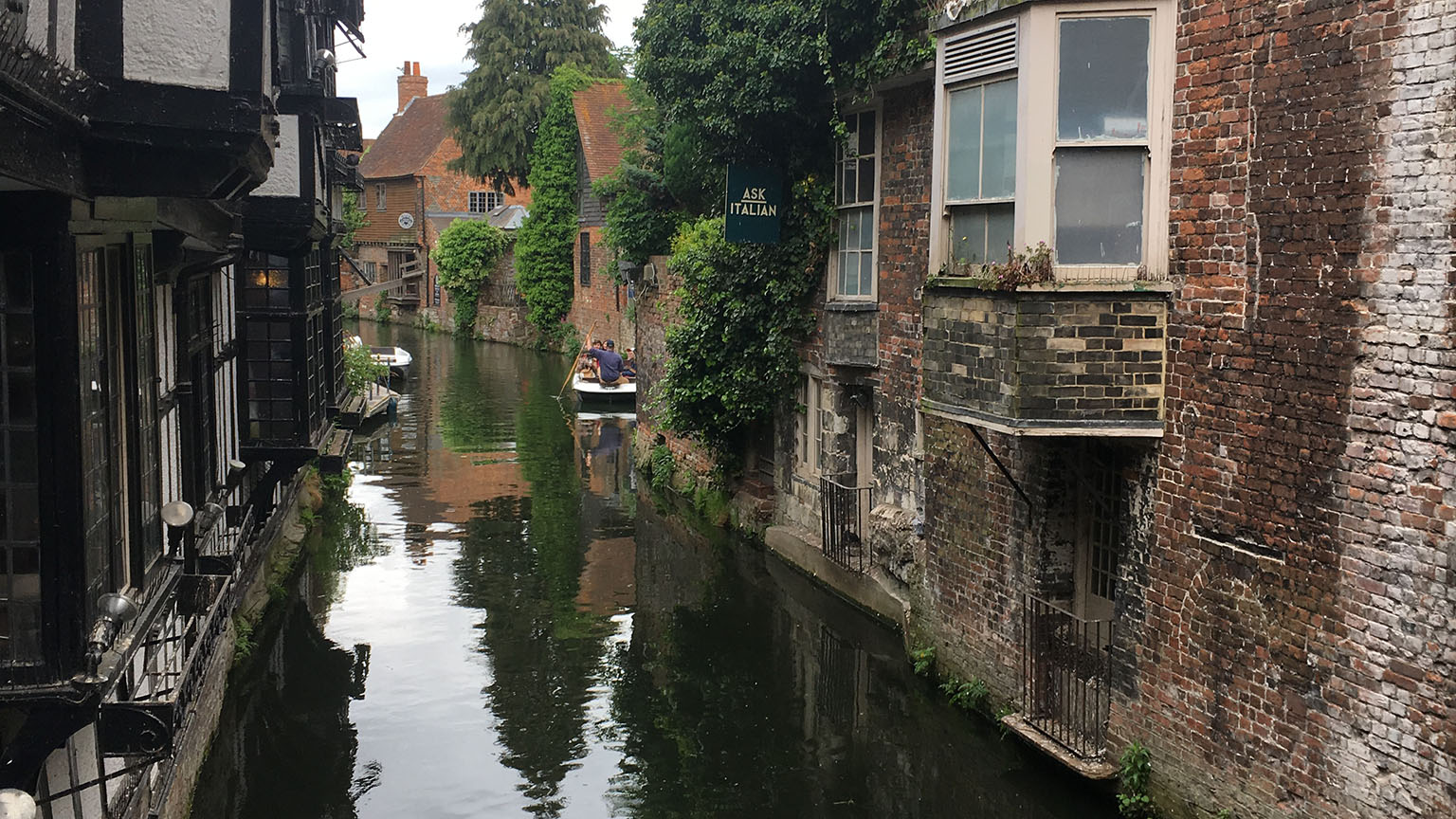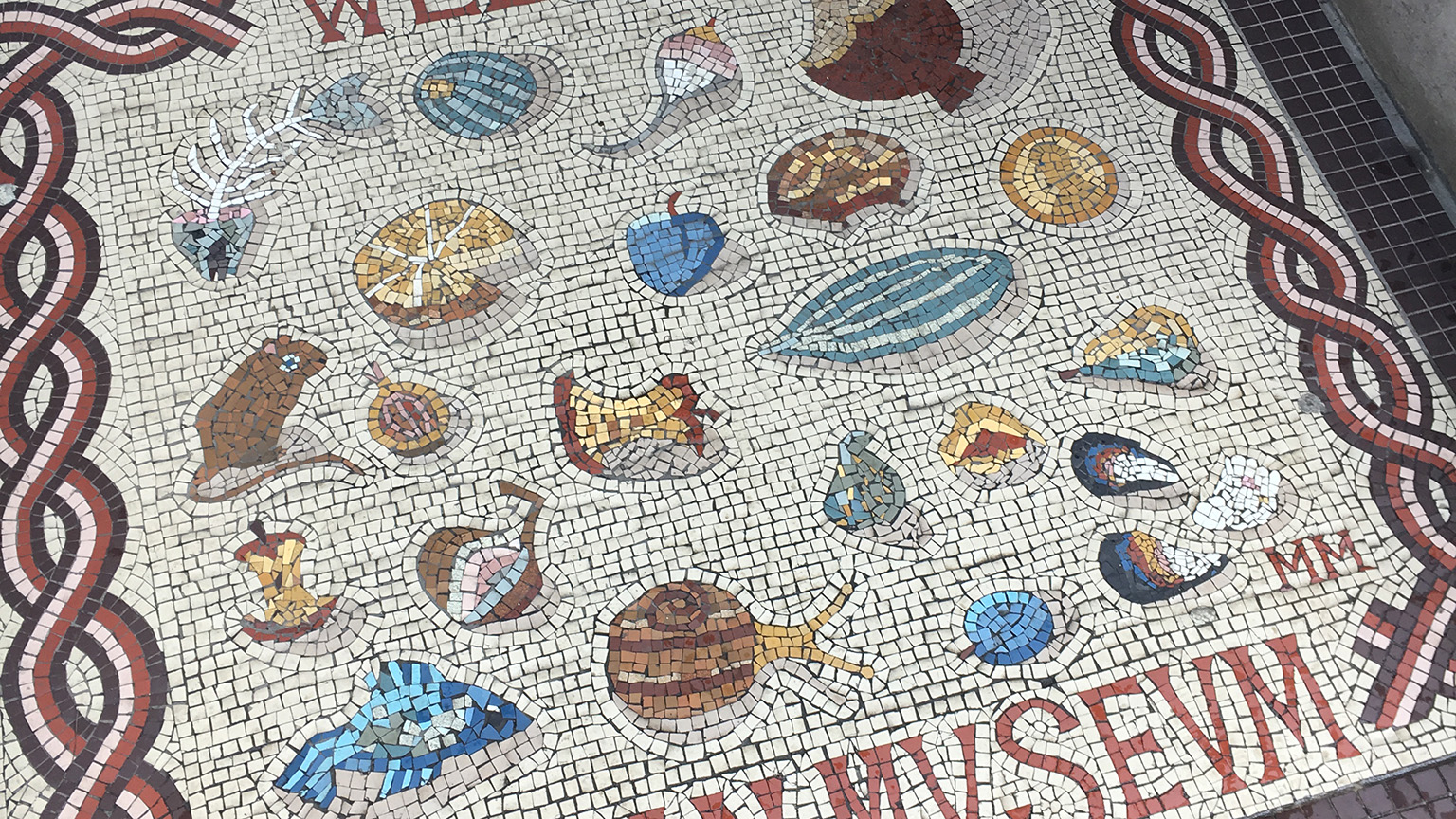An insider's guide to Canterbury

Local insider Rose London explores Roman relics and amazing views in Canterbury, and recommends more art in Kent with a trip to Turner Contemporary.
For the average tourist, the quintessential Cambridge experience is a punting tour of the colleges: threading through the heart of St John’s, peeking into the library at Trinity Hall, tugging at a branch of the weeping willow at Magdalene. It’s all very enchanting – but, like most magic, it is far removed from reality.
Quite apart from the tour guides’ notoriously dodgy historical anecdotes (did the apple really fall on Newton’s head from that specific tree?), these trips give visitors a false impression: that Cambridge is just an oversized campus, a university with a town attached.
The best remedy for this misconception is to explore the city’s museums and galleries, which work alongside the university to punch far above their weight (as well as offer a reminder that Cambridge is more than just its students).
Bakes and buns to get you started...
The city’s centre of gravity is the river, which makes it a good place to start. But instead of hiring that pricey punt, walk up to Magdalene Bridge. There you’ll find an outpost of Fitzbillies, the bakery, one of the few Cambridge institutions that is enjoyed by students, tourists and locals alike.
Their signature is the dense, gelatinous Chelsea buns, but the real draw is a brunch menu that is served until four, answering hungover prayers with eggs and pancakes.
That should provide more than enough fuel for the double bill just up Magdalene Street: the Museum of Cambridge and Kettle’s Yard, which are next-door neighbours.

Two treasure troves
The Museum of Cambridge – which offers free entry to visitors with a National Art Pass or Student Art Pass – is an eccentric trove of local history, the perfect antidote to student-centric tourism.
The Grade II listed 17th-century building, a timber-framed former pub, itself almost merits a visit, while the collection includes everything from nut crackers to vacuum cleaners, to glass globes that fend off evil spirits.
Despite this madcap miscellany, care and attention is afforded to each of the objects, and the stories they tell of the people of Cambridgeshire.

Kettle’s Yard strikes a different tone. The house at its centre was originally the home of Helen and Jim Ede, an art collector who would give personal tours to visitors over afternoon tea. The modernist gallery (pictured top) next to the house reopened after a swish renovation in 2018, and now regularly features international exhibitions – an Oscar Murillo show was a recent highlight.
The real treasure, though, is the house itself. Kept in more or less the same state as when the Edes lived there, it is achingly beautiful, filled with art and objects that were selected with all the care that the Museum of Cambridge affords its vacuum cleaners.
The collection is particularly strong in early 20th-century art, but the magic of the place depends as much upon the way the collection is presented, with painstaking attention to detail: in my own favourite room, two carefully placed glass bottles elegantly rhyme with the Joan Miró painting behind them.
As many galleries question the ‘white cube’ format in favour of more sensitive, domestic exhibition spaces, Kettle’s Yard once again feels strikingly modern. Use the Art Pass shop discount to buy a turquoise tote bag, the de facto uniform of Cambridge’s trendiest students.

Discovering the university's museums
Of course, while getting away from the beaten track of the college circuit is a worthy aim, it would be a shame to miss out on the university’s eight museums, which are among the city’s most important cultural assets.
For art lovers, the Fitzwilliam Museum is the obvious choice, with works in its collection by Monet, Picasso and Rembrandt. Beyond these headliners, though, it’s worth sifting through the oddly beguiling collections of coins, weapons, clocks and pottery.
Even weirder is the Museum of Classical Archaeology, which is a few minutes’ walk across the Fens (watch out for cows). Located in a loft above the Faculty of Classics, it has a more modest architectural context than the imposing Fitzwilliam, but is a much better-kept secret. It’s often quiet, so you can generally wander unaccompanied through the rows of faintly eerie plaster casts of classical statues.

Something special in Ely
Although it’s often described as a bubble, Cambridge is certainly not an island. Ely, with its 900-year-old cathedral, is a 15-minute train ride away.
An Art Pass will get you free entry to the cathedral’s Stained Glass Museum, another hidden find with a slightly otherworldly, magical air. As well as precious examples of stained glass from as long ago as the 13th century, the museum has a rotating display of contemporary glass, drawing attention to the fact that this is an art form which is still very much alive.
In fact, the museum embodies much of what’s best about Cambridge’s cultural life: a hidden gem within a towering icon, a rich past which informs a vibrant present, and – most importantly – an excellent venue for tea and cakes nearby.
James Waddell is a PhD candidate in English at UCL. He is researching early modern ideas about reading distractedly, whilst trying to avoid doing so himself. He writes for The Economist and Times Literary Supplement about books and arts, and tweets @james_waddell
James was a winner of our 2019 student writing competition.
The more you see, the more we do.
The National Art Pass lets you enjoy free entry to hundreds of museums, galleries and historic places across the UK, while raising money to support them.